Landscapes and Minimalism: The Creative Power of Snow in Photography
- Olivier

- Sep 9, 2022
- 7 min read
Updated: Mar 29, 2025
In the vast realm of photography, capturing snowy landscapes holds a unique position. A place where minimalism merges with the philosophy of silence and contemplation. From winter solitude to the purity of the immaculate white, snow enhances the evocative and emotional power of the elements. It invites introspection on the ephemeral beauty of the landscape.
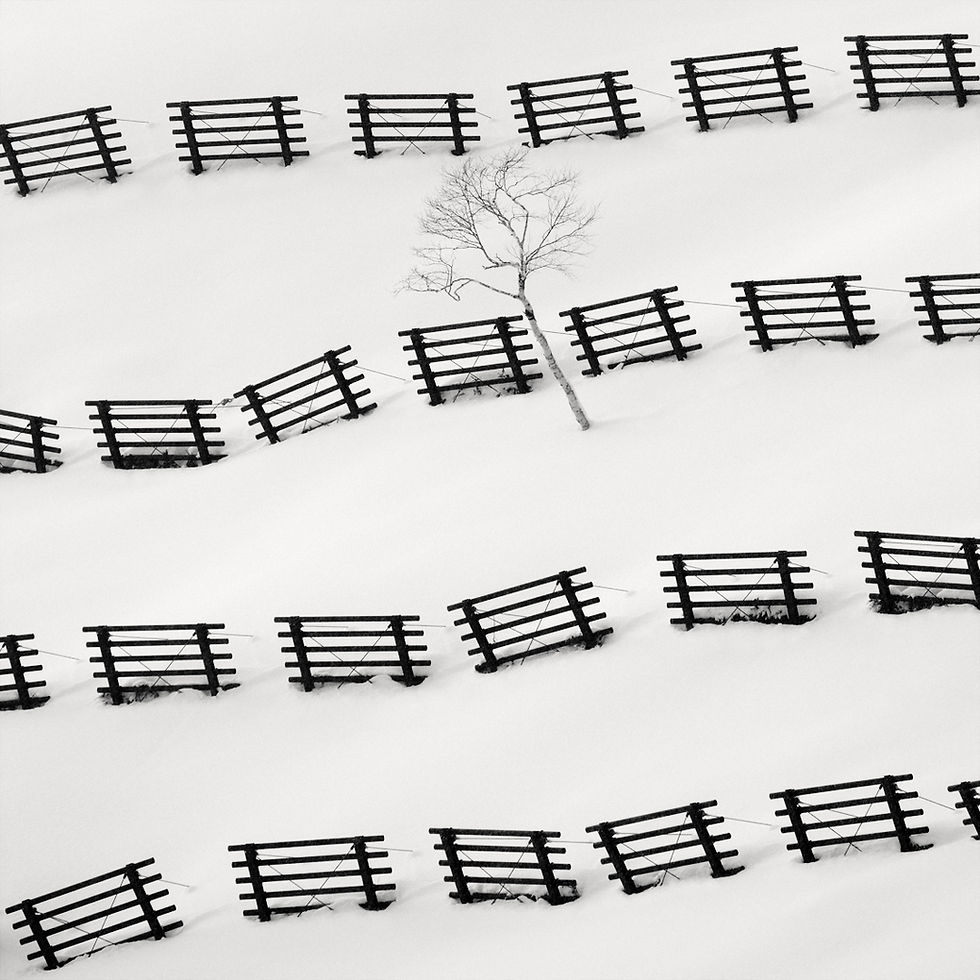
Introduction
After many years of photographing the minimalist landscapes of our beautiful planet, I have often found myself in a state of creative excitement in front of a simple snow-covered landscape. As if this white blanket revealed the intrinsic and unexplored beauty of nature. As if a seemingly mundane spectacle was suddenly sublimed under a few centimeters of immaculate whiteness.
Snow then becomes a metaphor for the search for meaning in photographic compositions. The purity, simplicity, and timelessness of these moments reveal the essential character of the observed landscapes.
It's undeniable, snow has a unique ability to transform subjects. It thus profiles itself as an ideal backdrop for photographers in search of minimalism. In this article, I propose a personal philosophical reflection on the inherent beauty of snow in photography.
I also revisit the advantages of black and white and its ability to enhance the powerful simplicity of snow. And to be complete, I also explore the impact of snow on our unconscious and its influence on the perception of landscapes in photography.

Natural Minimalist Beauty
Snow transforms the landscape into a scene of purity and tranquility, where superfluous details are blurred, leaving only the essence of shapes and lines. This stripping away leads to a form of natural minimalism, where each element is imbued with meaning.
In photography, this simplicity forces the viewer to slow down, to contemplate the scene, allowing for a deep immersion into the image. Snow, with its ability to simplify the subjective interpretation we make of the landscape, becomes a powerful vector of minimalism. It stands out as a theater stage where forms, textures, and light play the leading roles.
Enhancing the Ordinary
Snow has a unique ability to transform and elevate the most ordinary elements of the landscape, such as trees, groves, stakes, or fences, into subjects of great beauty. It then becomes a blank canvas rich in creative possibilities for the photographer.
This phenomenon can be explained by several distinct mechanisms and visual effects that, together, create a captivating scene for the viewer. Here are 5 mechanisms I have observed over time.
1. Contrast and Simplification
Snow creates a uniform and bright background that brings out subjects by contrast. The dark or colored shapes of objects stand out sharply against the brilliant white, accentuating their visual presence. This dichotomy between the object and its environment simplifies the composition and draws attention to the main subject, highlighting its shape, structure, and texture.
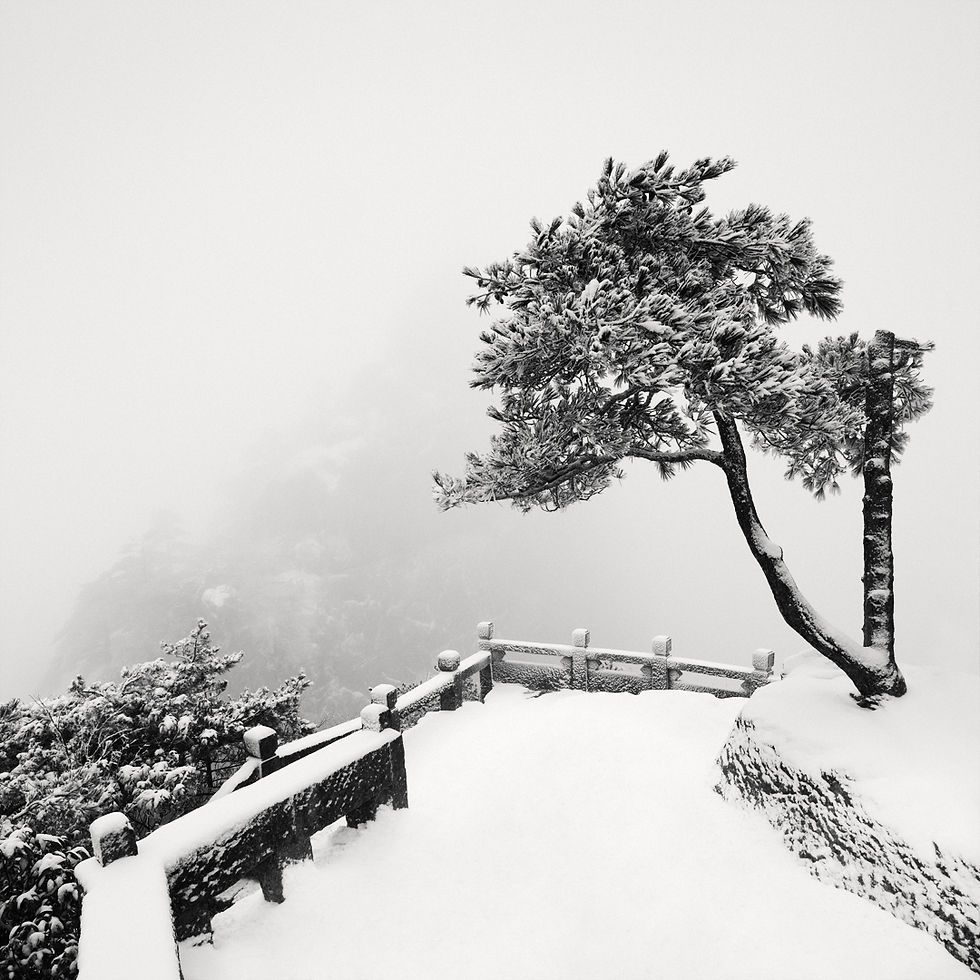
2. Shape and Texture
Snow alters the texture of landscapes, covering everything with a uniform and soft blanket that softens contours and creates new shapes. Elements once familiar, such as trees or fences, are thus given a new aesthetic dimension.
Their appearance is transformed, sometimes beyond recognition, prompting a reevaluation of their intrinsic beauty. The particular texture of snow, both soft and crisp, also adds an element of visual interest that enriches the photographic composition.
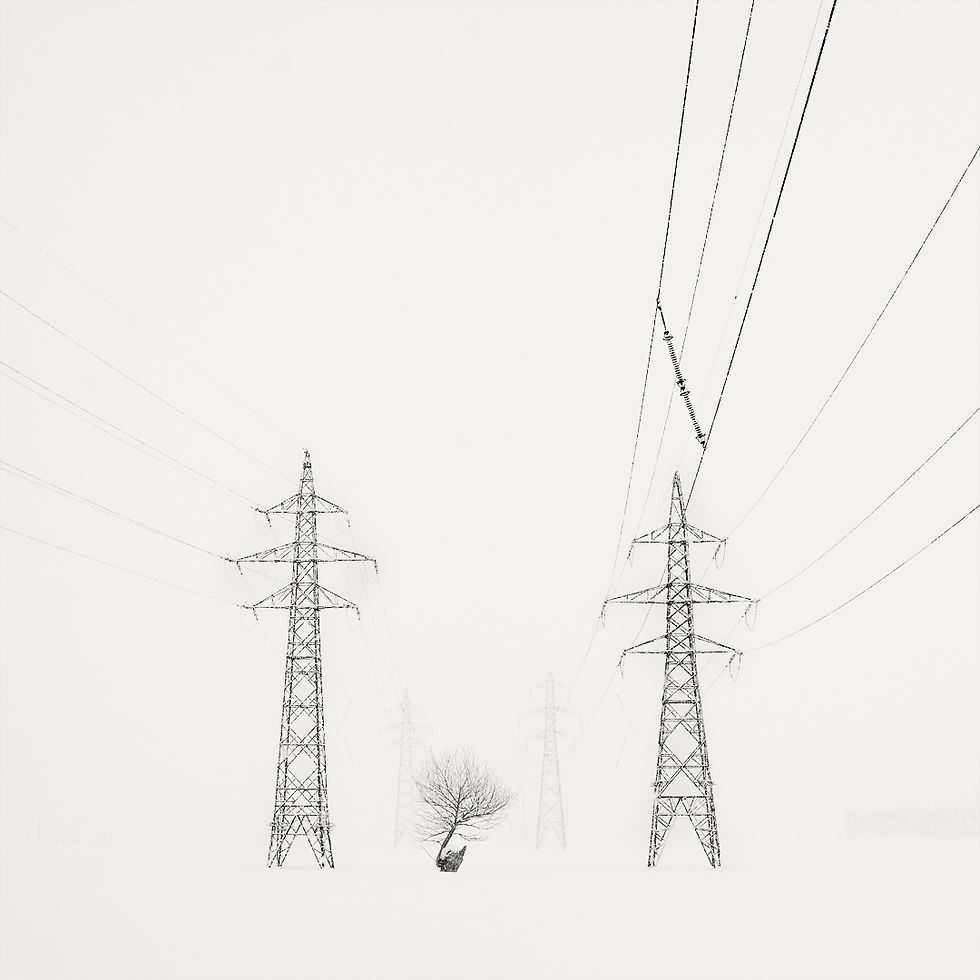
3. Light and Shadow
Snow amplifies the reflection of natural light, thereby creating a pronounced play of shadows that reveals or accentuates otherwise subtle details. The shadows cast on the snow by trees or structures create patterns and lines that can serve as a focal point or visual guide in the photographic composition.
This effect is naturally more pronounced during the early morning glow or late in the day. The warm and angled light indeed highlights textures and contours, revealing additional depth and dynamics to the image.
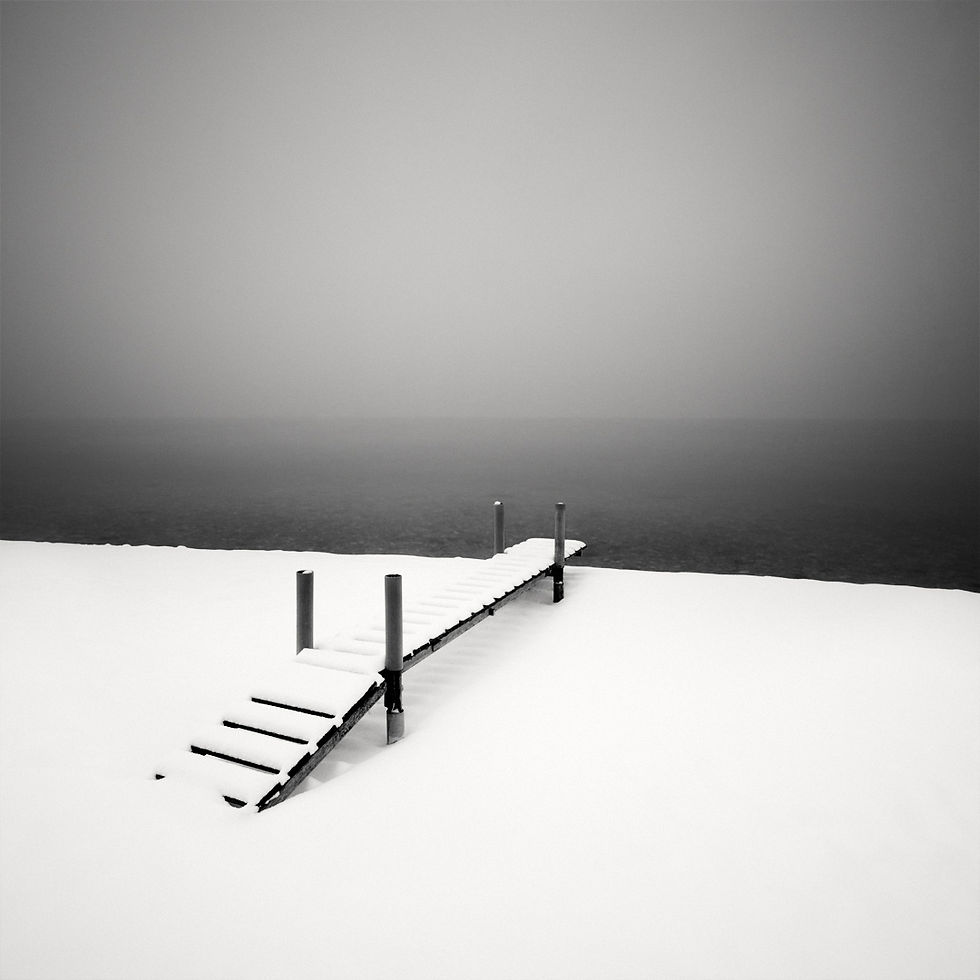
4. Isolation and Emphasis
By covering the landscape, snow isolates subjects, separating them from their usual context and thereby highlighting them. This isolation helps to focus the viewer's attention on specific aspects of the subject, such as its shape or its new interaction with the snowy environment. By eliminating visual distractions, snow enhances a form of natural minimalism, where simple yet powerful elements dominate the composition.
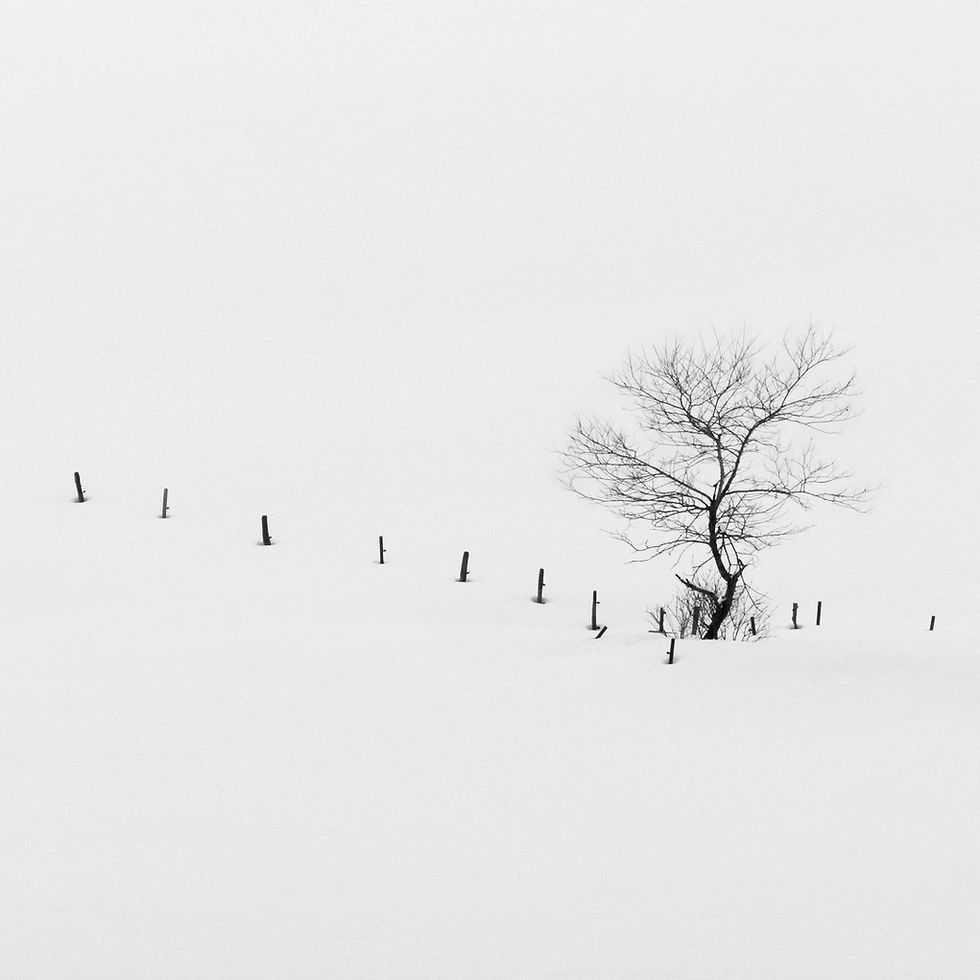
5. Symbolism and Emotion
Snow carries a strong symbolic and emotional potential related to purity, silence, isolation, or renewal. Ordinary subjects, when immersed in a snowy landscape, acquire a symbolic dimension or evoke particular emotions.
A solitary tree in a snow expanse evokes solitude or resilience, while a fence covered in snow symbolizes the blurred boundaries between man and nature. These associations enrich the narrative and meaning of the image. They stimulate an emotional response in the viewer.
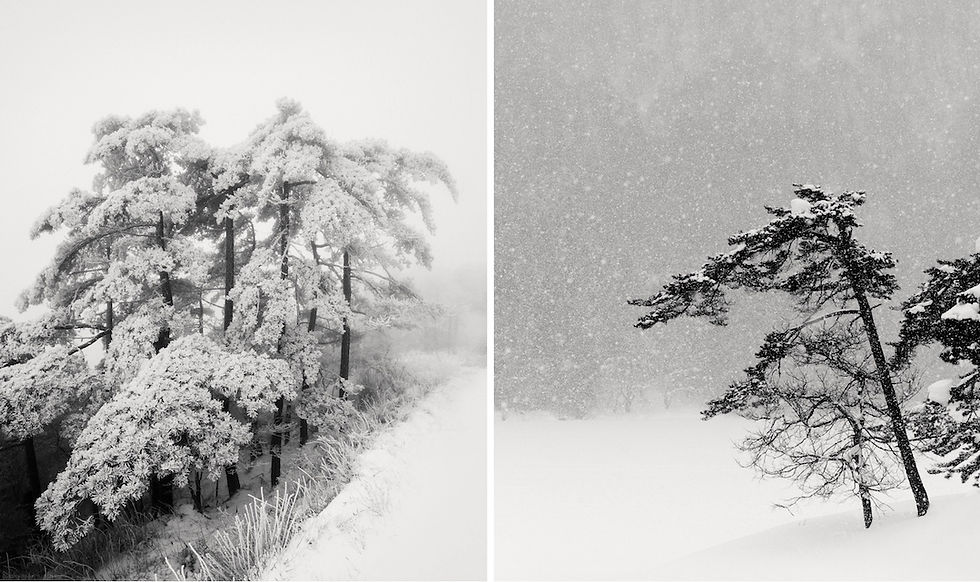
Snow and Black and White
As I often mention in my articles, to me, black and white photography is intrinsically linked to the expression of simplicity and timelessness. In the context of winter landscapes, snow accentuates contrasts, highlighting the purity of emerging elements, such as trees or man-made structures, creating an almost surreal dimension. Here are 3 aspects that support my point.
1. Visual Simplification
Black and white removes the potential distraction of colors, allowing the viewer to focus on composition, texture, and shape. In snowy landscapes, where color is often naturally minimal or subtle, black and white seems to impose itself. It also reveals details and structures that would otherwise be drowned in a chromatic universe.
Consequently, black and white eliminates distractions, allowing a better grasp of the essence of simplicity and tranquility of snowy landscapes. This simplification leads the viewer to appreciate the purity of lines and the delicacy of the photographed patterns.
2. Depth and Texture
Texture is a crucial aspect of snow landscapes, and black and white photography offers a rich palette for exploring it. The wide range of grays between deep black and pure white allows for capturing the subtlety of snow's textures, be it smooth and untouched surfaces, crystalline clumps, or the delicate details left by frost. These shades of gray add a tactile dimension to the images, almost inviting the viewer to feel the biting cold of the air and the softness of the snow.
3. Atmosphere and Emotion
Black and white photography is renowned for its ability to convey atmosphere and emotion, qualities that are particularly inherent to snowy landscapes. The absence of color intensifies feelings of solitude, silence, and serenity often associated with winter. It allows for a deeper emotional connection with the image. Snow, with its language of purity and renewal, acquires an almost spiritual dimension in black and white, evoking contemplation and introspection.

Snow in the Collective Unconscious
Snow holds a special place in the collective unconscious, evoking a range of emotions and symbols that vary across cultures and individual experiences. As mentioned, it is often associated with concepts of purity, silence, renewal, but also isolation and harshness.
In photography, these idea associations contribute to the emotional depth of images, allowing viewers to project their own feelings and memories onto the captured scene. Snow acts like a mirror, reflecting not only light but also the inner thoughts and emotions of individuals.
Influence on Perception
The simplicity of snowy landscapes invites contemplation and reflection, influencing the intellectual perception of things. It prompts a renewed appreciation for details often overlooked, an awareness of space, silence, and time.
This reduction to the essentials allows for a form of visual meditation, where the mind can wander freely, exploring ideas and emotions beyond the surface. Photographing these landscapes offers a pause in the constant flow of information and stimuli, fostering a state of introspective reflection.
Effects on the Psyche
The impact of snow on individuals' psyche is ambivalent. On one hand, the brightness and purity associated with snowy landscapes can have a revitalizing and energizing effect, contributing to a sense of well-being and joy. On the other hand, the isolation and silence of winter can also induce feelings of melancholy or introspective reflection.
In photography, this duality can be captured and powerfully expressed. It allows both photographers and viewers to explore their own emotional responses to winter. Snow images thus serve as a catalyst for a range of emotions, from the most joyful to the most contemplative, while transforming everyday subjects into captivating works of art.

The Final Word
Snow, in its minimalist splendor, offers a scene rich in contrasts, textures, and emotions, making it a subject of choice for photographers. The preference for black and white in capturing these landscapes underscores the power of simplicity, highlighting the beauty and tranquility inherent to winter.
The emotional and intellectual responses these images elicit testify to the unique place snow occupies in our collective imagination, acting both as a source of inspiration and contemplation. Through the photographer's lens, snow becomes a medium for exploring the complexity of human emotions. It opens a window to the soul and becomes the mirror of our inner landscapes.









